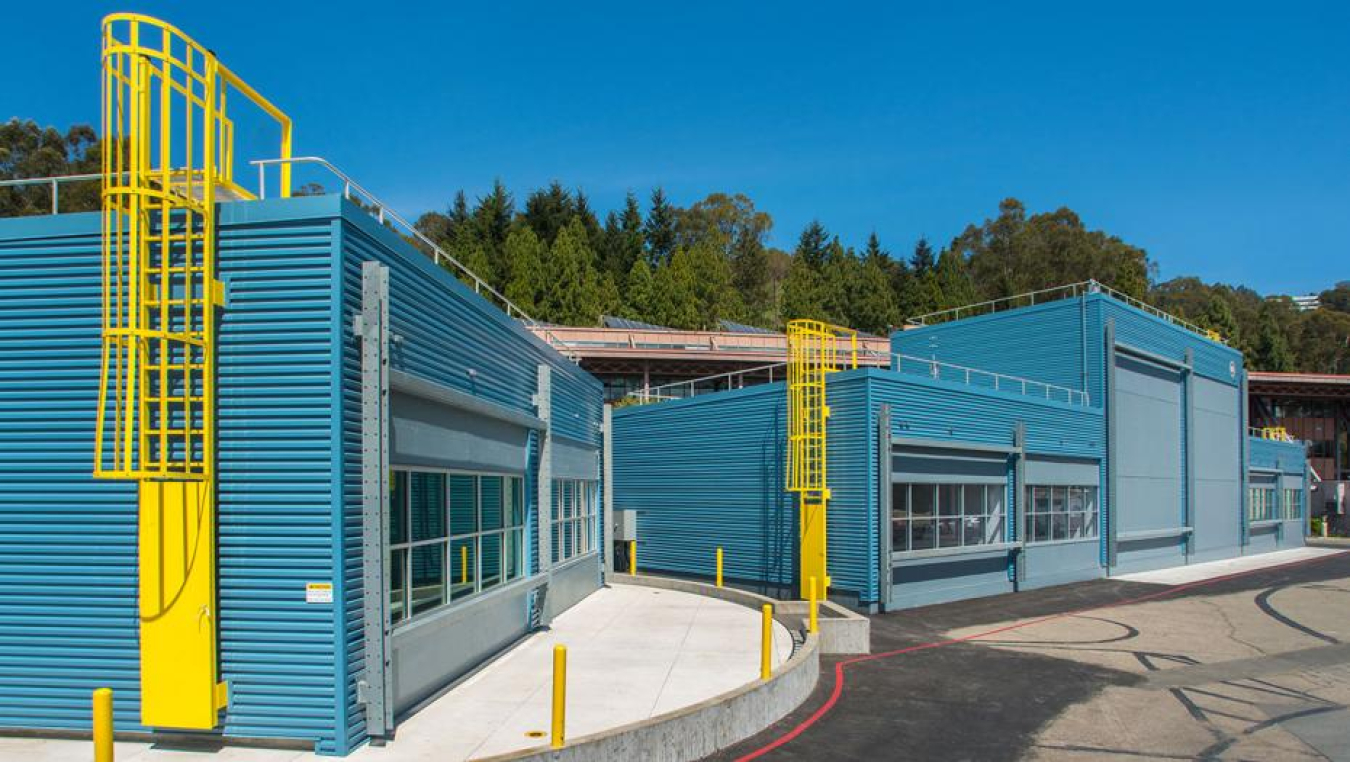This project leverages well-characterized, well-instrumented test facilities at ORNL and LBNL to empirically validate BEM engines like EnergyPlus.
January 15, 2016
LBNL's FLEXLAB includes four test cells each split into two half-cells to enable side-by-side comparative experiments. Each cell has one reconfigurable facade and reconfigurable single-zone HVAC systems. One cell sits on 270-degree turntable.
Performers:
- Lawrence Berkeley National Laboratory (LBNL) — Berkeley, CA
- Oak Ridge National Laboratory (ORNL) — Oak Ridge, TN
- National Renewable Energy Laboratory (NREL) — Golden, CO
- Argonne National Laboratory (ANL) — Argonne, IL
Project Term: Oct. 1, 2015 - Sep. 30, 2019
Funding Type: 2014 Building Energy Modeling competitive lab call
DOE Funding: $1,400,000 in FY18; $4,400,000 overall
Related Projects: EnergyPlus, ASHRAE Standard 140
Project Objective
Building energy modeling (BEM) is a multipurpose energy-efficiency tool that supports design optimization for new construction and deep retrofits, energy-efficiency code development and compliance, asset rating, and green certification. Emerging uses of BEM include automated fault-detection and diagnosis (AFDD) of building HVAC systems and model predictive control (MPC) of buildings for energy reduction and demand response. To minimize the cost of high-performance new buildings and deep retrofits at scale, and to spur the adoption of energy-efficient building operation methods, it is necessary to support and encourage the wider and more effective use of BEM.
One barrier to the use of BEM is the perception that BEM cannot reliably predict actual energy performance. In reality, accurately predicting absolute energy performance is difficult because it requires accurate information about things like weather and building occupancy and use that are impossible to know with certainty a priori. BEM professionals know this and so common uses of BEM like code compliance and LEED certification don’t rely on absolute performance predictions, but rather on relative performance predictions that use standard assumptions for weather and occupancy to control for uncertainties in these inputs. In doing so, BEM practitioners are following the old George Box maxim “All models are wrong, some are useful." The irony is that making BEM more useful also feeds the perception that it is wrong.
Breaking this cycle and restoring the reputation of the BEM enterprise requires definitive, meaningful attribution of deviations to or uncertainties in BEM inputs on one hand and to the approximations and potentially erroneous implementations in the tools themselves on the other. Subsequently, it may also potentially require techniques for controlling input uncertainties, improvements to the algorithms, or both. But attribution must come first. Performing meaningful attribution has been difficult in the past because of the challenges of performing controlled experiments in real buildings on one hand and the cost of specialized testing facilities on the other. However, the recent completion of commercial-building test facilities at both LBNL (FLEXLAB) and ORNL (FRP) presents an opportunity to perform the needed experiments and make substantial progress along this critical front.
This three-year project has two goals:
- To plan, define, execute, and carefully document experiments that will produce data sets that can be used to validate BEM engines, i.e., to characterize the accuracy of their most important calculations and diagnose implementation errors and inadequate assumptions so that developers can correct them. These experiments will use FLEXLAB and FRP as well as smaller testing facilities at other national labs and perhaps even non-lab facilities. A technical advisory board has been assembled to help guide and prioritize experiments.
- To develop a framework for characterizing uncertainties in component and system models so that it can be properly accounted for in analysis.
DOE plans to use the data sets to validate and potentially improve its open-source BEM engine EnergyPlus. However, the experiments and data sets will be engine agnostic and will be made available to all engine developers via ASHRAE Standard 140. Similarly, DOE plans to implement the uncertainty framework for EnergyPlus, but the framework itself will be generic and engine-agnostic.
Project Impact
Characterizing and potentially improving the accuracy of BEM engines and while developing methods for controlling remaining uncertainties in the engine and inputs should yield three benefits:
- It will improve the accuracy of BEM—or at least the accuracy of uses of BEM—improving the effectiveness of existing BEM uses while potentially enabling new uses.
- It will improve the reputation of BEM and the confidence of energy-efficiency decision-makers in BEM, increasing the use of BEM in both traditional and emerging energy-efficiency applications.
- It will more clearly define the scope of the role of BEM input uncertainty, prioritize inputs for which uncertainly must be minimized, and perhaps identify ways of doing so. Reducing BEM input error will subsequently reinforce the accuracy and confidence benefits.
Contacts
- DOE Technology Manager: Amir Roth
- Principal Investigators: Philip Haves, LBNL, Piljae Im, ORNL; Ron Judkoff, NREL; Ralph Muehleisen, ANL

